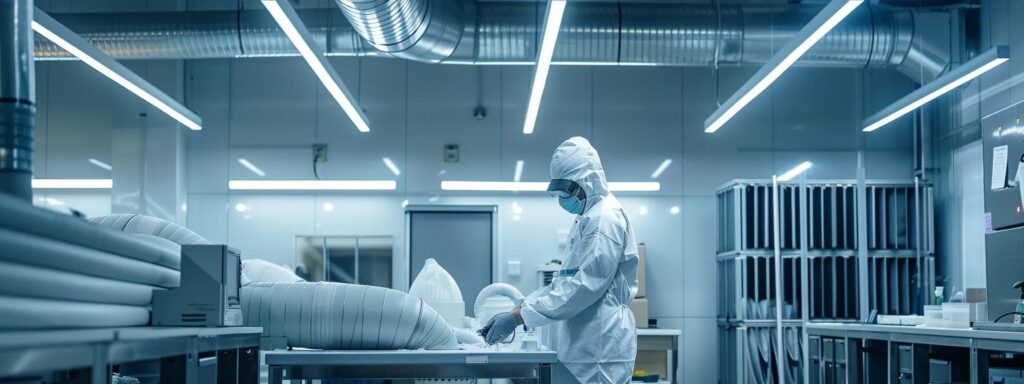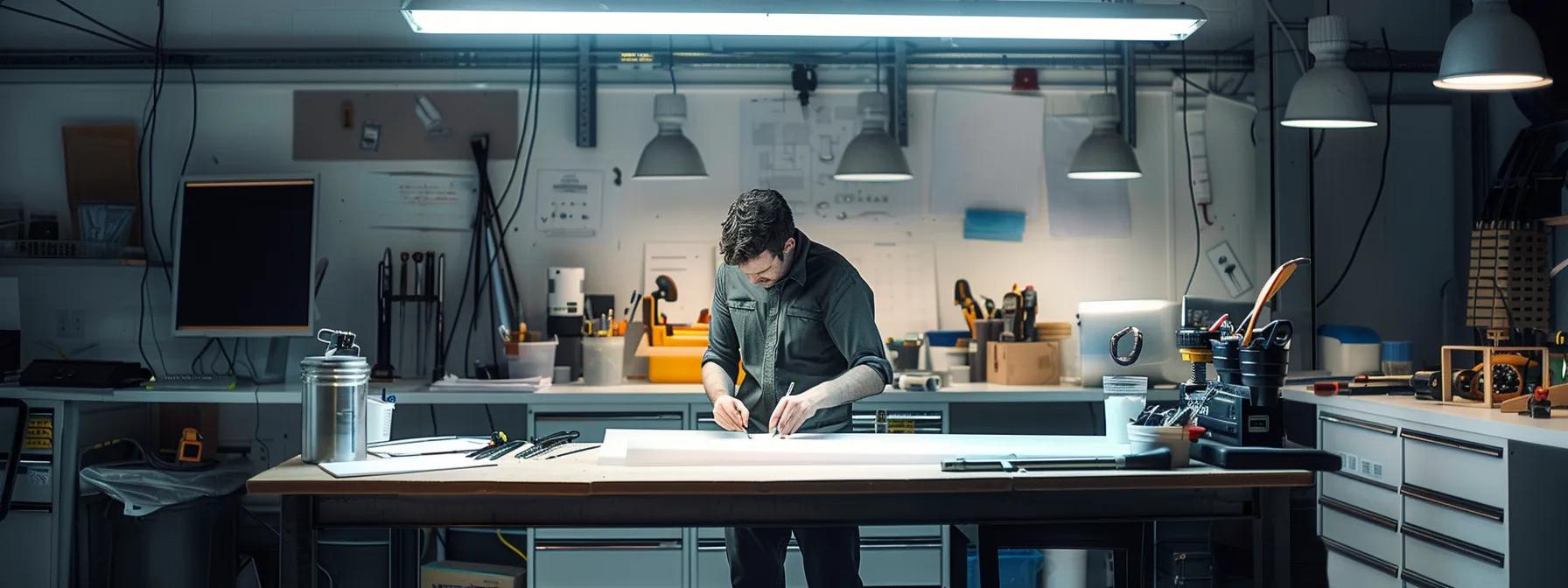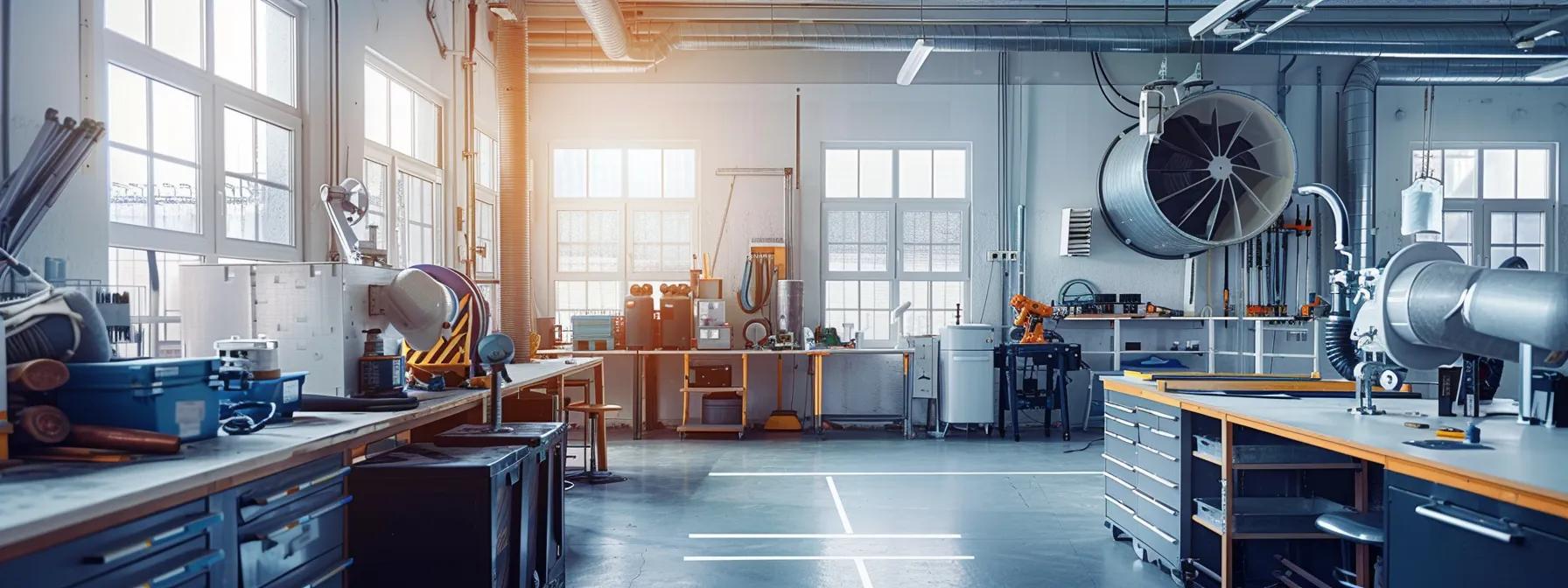Recognizing the Right Time for Duct Cleaning Assistance

When it comes to maintaining optimal indoor air quality, knowing when to perform DIY duct maintenance versus calling in expert HVAC professionals is vital. For instance, many homeowners with heat pumps or furnaces find that coupling routine cleaning with proactive maintenance-plans not only protects against allergens and pollutants but also enhances overall system efficiency. Proper duct cleaning improves airflow and reduces allergens, pollutants, and potential pest hazards. Homeowners can benefit from routine DIY techniques for regular upkeep, while professional services become necessary when deep-seated contaminants or mold are present.
Foundational Diy Duct Maintenance Techniques for Cleaner Air
Inspecting Your Vents and Registers for Debris
Regularly inspecting vents and registers helps identify dust, dirt, and debris that hinder proper airflow. Homeowners should visually check each vent for blockages and buildup at least once a month. This simple inspection can reveal loose contaminants before they degrade system performance and indoor air quality. Matching these findings with seasonal changes can help in planning effective preventive strategies and ensuring an allergen-free environment.
Simple Methods for Cleaning Vent Covers
Cleaning vent covers is a straightforward maintenance step. Remove the covers, soak them in warm water with a gentle detergent, and scrub with a soft-bristle brush to remove dirt and grime. Rinse thoroughly and dry before reinstalling. Clean vent covers restore both aesthetics and airflow efficiency, and they help prevent allergen accumulation.
Vacuuming Accessible Duct Openings
Using a household vacuum with a brush attachment is effective for removing surface dust and loose particles from accessible duct openings. Homeowners should schedule a seasonal vacuuming session in these areas. Regular vacuuming helps prevent the buildup of particles that could later be recirculated into the air and compromise indoor air quality.
Changing Your Air Filters Regularly as a Maintenance Technique
Air filters are critical to trapping dust, pollen, and other airborne particles before reaching the ductwork. It is advisable to check and change HVAC air filters at least once every three months or more frequently during high-use periods. Regular filter replacement ensures efficient system operation and minimizes the risk of contaminants settling inside ducts, which supports improved indoor air quality and extends system lifespan.
Identifying Areas Prone to Dust Accumulation
Certain areas in a home, such as those near traffic zones, pet areas, or older constructions, tend to accumulate more dust. By identifying these spots during routine inspections, homeowners can concentrate cleaning efforts where they are most needed. Techniques like wiping surfaces around vents, sealing gaps, and using targeted vacuum attachments help control dust buildup and reduce the spread of contaminants throughout the home.
Steps for Basic Do-It-Yourself Air Duct System Upkeep

Preparing Your Workspace for a DIY Clean
Before starting any cleaning, it is essential to prepare the workspace. This involves turning off the HVAC system, laying down protective sheets, and gathering all necessary tools and supplies. An organized workspace minimizes injury risk and prevents debris from spreading to other areas. Adequate lighting and safe floor conditions also contribute to a more efficient and secure cleaning process.
Safely Removing and Cleaning Grilles and Diffusers
Carefully remove grilles and diffusers to avoid damage. Once removed, soak these components in mild soapy water and scrub them clean. It is important to safely handle and store any screws or fasteners. After washing, allow the parts to dry completely before reinstalling to prevent moisture retention or mold growth, especially in humid climates.
Utilizing Household Vacuums for Surface Cleaning
Household vacuums with the proper attachments can effectively clean accessible duct components. Running the vacuum along the edges of ducts and grate slots captures loose dust and dander. Regular vacuuming supports overall cleaning efforts and complements air filter changes. Using vacuums with HEPA filters is recommended to ensure that even fine particles are removed from the air.
Wiping Down Interior Surfaces of Accessible Ducts
For ducts that can be safely accessed, wiping interior surfaces with a microfiber cloth dampened with a gentle cleaning solution is advisable. This method helps remove particles that a vacuum might miss. The microfiber cloth traps fine dust without scratching surfaces, and regular wiping prevents long-term buildup while maintaining a clean internal duct environment.
Reinstalling Cleaned Components Correctly
After cleaning, it is critical to reinstall all components securely in the correct order. Improper reassembly can lead to air leaks or reduced airflow, negating the benefits of cleaning. Homeowners should double-check that every grille, diffuser, and vent cover is firmly in place and that no obstructions remain, ensuring the HVAC system operates at peak efficiency.
Tools and Supplies for Effective Home Duct Maintenance
Selecting Appropriate Brushes for Duct Interiors
Using brushes designed for duct interiors enhances cleaning effectiveness. Brushes with soft, flexible bristles can dislodge dust without damaging duct surfaces. Available in various sizes to fit different ducts, these specialized tools ensure even hidden corners are reached, reducing the chance of dust migration into living spaces.
Choosing the Right Vacuum Attachments
The right vacuum attachments make a significant difference in cleaning ducts effectively. Narrow crevice tools and soft brushes increase surface contact while minimizing damage. HEPA-equipped vacuum attachments are particularly effective at trapping fine particles, ultimately supporting long-term indoor air quality and system functionality.
Using Protective Gear Like Masks and Gloves
Handling dust, allergens, and debris safely requires personal protective equipment (PPE). Wearing dust masks, gloves, and eye protection minimizes the risk of irritation or respiratory issues during cleaning. This gear not only protects the user but also provides peace of mind, which is especially important for those with allergies or asthma.
Microfiber Cloths for Dust and Grime Removal
Microfiber cloths are essential in DIY duct cleaning due to their superior dust-trapping properties. Their fine fibers capture particles that regular cloths may overlook, and their reusability makes them economical. Using these cloths to wipe surfaces enhances the overall cleaning process and helps maintain a dust-free environment.
Considering HEPA Filters for Your Vacuum
Incorporating HEPA filters in a vacuum ensures even microscopic particles are captured. Replacing standard filters with HEPA-equipped ones can significantly enhance indoor air quality by preventing allergens and pollutants from being released back into the air. This upgrade is especially effective in homes prone to allergies or where a cleaner environment is desired.
Understanding the Boundaries of DIY Duct Cleaning Efforts

Recognizing Deep-Seated Contaminants
While DIY methods address surface-level maintenance effectively, deep-seated contaminants often require specialized equipment. Grease, mold, and embedded particulate matter may be beyond the reach of household tools. Recognizing these limitations is essential to avoid incomplete cleaning that can lead to reduced airflow or recurring odors. In such cases, professional consultation offers a more comprehensive solution.
Addressing Mold Growth Concerns in Ductwork
Mold growth in ductwork is a serious concern due to potential health risks. If mold or mildew is detected during an inspection, it could indicate that moisture has penetrated deep into the ducts. Although DIY cleaning may remove surface mold, deep-seated mold generally requires professional cleaning, including antimicrobial treatments, to ensure complete eradication and to prevent regrowth.
Dealing With Pest Infestations in Vents
Pest infestations in ductwork, such as rodents or insects, present both health hazards and maintenance challenges. DIY methods may not fully eradicate pests from the intricate HVAC system. Contaminants like droppings or dander can further complicate cleaning. In these scenarios, professional inspectors use advanced tools and techniques to safely remove pests and properly sanitize the affected areas.
Limitations of Household Equipment for Full System Cleaning
Household cleaning equipment, while helpful for routine tasks, is often inadequate for full-scale duct cleaning. Many parts of the duct system are inaccessible with standard tools, particularly in large or complex networks. Tools like compressed air and high-powered vacuums, typically used by professionals, reach hidden debris that DIY equipment might miss. Recognizing these limitations is key to avoiding a false sense of security after a cleaning session.
Assessing Complex Ductwork Configurations
Homes with complex ductwork—including multiple bends, long pathways, or varied duct sizes—may require professional assessment. Such configurations can harbor debris in areas inaccessible to household tools. Professional services use specialized cameras and equipment to assess, clean, and even redesign duct systems if needed. This ensures that maintenance strategies are properly matched to the complexity of the system, promoting optimal performance.
Identifying Situations When to Call Professionals for Duct Cleaning
Persistent Allergies or Respiratory Issues After DIY Attempts
If persistent allergies or respiratory issues continue despite regular DIY cleaning, it may indicate that deeper contaminants remain in the ducts. Professional duct cleaning can remove allergens, dust, and dander that household methods might leave behind. Persistent symptoms are a clear signal that an industrial-level cleaning is necessary to restore and maintain healthy indoor air quality.
Visible Mold or Mildew Within the Duct System
The presence of visible mold or mildew inside the ductwork is a strong indicator that professional intervention is needed. Although DIY cleaning might remove superficial mold, extensive contamination poses significant health risks, including respiratory issues and allergic reactions. Professionals have the tools and expertise to perform a deep cleaning and apply effective antimicrobial treatments to ensure the ducts are safe and contaminant-free.
Evidence of Rodent or Insect Occupation
Finding rodent droppings or signs of insect infestations in the ducts should prompt immediate professional help. Pests can transmit diseases and introduce harmful contaminants like droppings and dander into the HVAC system. Experts collaborate with pest control professionals to remove infestations safely, sanitize affected areas, and implement measures to prevent future occurrences.
After Home Renovations Producing Significant Dust
Home renovations, remodeling, or construction can produce an excessive amount of dust and debris that infiltrate ductwork. In such cases, a professional cleaning may be necessary to restore proper indoor air quality. Professional equipment and techniques can effectively remove construction particles and contaminants that routine DIY methods might overlook.
For a Thorough Cleaning of the Entire HVAC System
A complete cleaning of an HVAC system—including ducts, air handlers, and coils—is often best handled by trained professionals. Over time, various system components accumulate contaminants that can impair performance. Extensive professional cleaning improves efficiency and longevity while ensuring that every system part is sanitized, resulting in a healthier indoor environment.
Maintaining Air Quality Post Your Diy Duct Maintenance Techniques

Establishing a Routine Cleaning Schedule
Consistent maintenance is key to preserving indoor air quality. Homeowners should set a routine schedule for inspecting and cleaning ducts, including regular filter changes and vacuuming. A well-planned schedule prevents significant buildup and extends the HVAC system’s lifespan, particularly as airflow requirements shift with seasonal changes.
Monitoring Indoor Air Quality Indicators
After cleaning, monitoring indoor air quality ensures that ducts remain free of harmful contaminants. Installing air quality monitors to track particulate levels, volatile organic compounds (VOCs), and humidity can provide early warnings if issues reappear. Keeping a log of these readings helps homeowners assess improvements and determine when another cleaning session is needed.
Ensuring Proper Ventilation Throughout Your Home
Good ventilation works hand-in-hand with duct maintenance. Even with clean ducts, poor air circulation can lead to stagnant air and lower indoor quality. Homeowners should ensure that windows, exhaust fans, and HVAC systems work together to promote optimal air exchange. Proper ventilation also reduces moisture, which is crucial for preventing mold growth.
Knowing When a Follow-Up DIY Session Is Needed
After a thorough duct cleaning, evaluating the indoor air quality and checking for new dust accumulation is important. If allergens or debris begin to build up again, a follow-up DIY cleaning may be required. Staying vigilant helps address potential issues before they escalate, ensuring continuous maintenance and improved performance.
Understanding How Professional Services Complement DIY Maintenance
While DIY duct cleaning is valuable for regular upkeep, professional services are essential for tackling deeper issues and complex system cleaning. Professionals bring advanced tools and expertise to reach areas that household methods cannot. By combining routine DIY maintenance with periodic professional cleanings, homeowners can achieve a higher standard of indoor air quality and keep their HVAC system operating at peak efficiency.
Table: Comparison of DIY Techniques and Professional Duct Cleaning
Before diving deeper into the advantages of both cleaning methods, consider this table outlining key aspects and benefits of each approach:
This table highlights how DIY efforts benefit routine maintenance while professional services offer a deeper, more comprehensive cleaning that addresses advanced issues, helping homeowners decide when to handle tasks personally and when to rely on experts.
Frequently Asked Questions
Q: How often should I inspect my air ducts for debris? A: It is recommended to inspect your air ducts and vents at least once a month to identify debris buildup early and schedule routine cleaning.
Q: Can regular DIY cleaning methods completely remove mold from ducts? A: DIY methods can remove surface mold, but deep-seated mold often requires professional cleaning and antimicrobial treatment for complete removal and regrowth prevention.
Q: What are the benefits of using HEPA filters during duct cleaning? A: HEPA filters trap even very fine particles, enhancing overall indoor air quality by stopping allergens and pollutants from recirculating in your home.
Q: When should I consider calling a professional duct cleaning service? A: If you experience persistent allergies, see visible mold, notice pest infestation signs, or have recently undergone extensive home renovations, it is advisable to contact professional duct cleaning services.
Q: How does routine duct maintenance affect HVAC system efficiency? A: Regular cleaning and maintenance ensure unobstructed airflow and reduced strain on the HVAC system, enhancing overall efficiency and extending its lifespan.
Q: Can professional duct cleaning improve my home’s energy efficiency? A: Yes, by ensuring that ducts and air filters are free from debris, professional cleaning can reduce energy consumption and improve overall HVAC performance.
Q: Is there a risk of damage when cleaning ducts myself? A: Improper techniques or excessive force can damage duct surfaces or dislodge parts. Always follow manufacturer instructions and proceed with caution.
Q: How important is it to change air filters regularly as part of duct maintenance? A: Very important—changing air filters every three months (or more often during high use) ensures that dust and allergens are captured before settling in the ducts and affecting air quality.
Final Thoughts
Maintaining clean air ducts through regular DIY practices can greatly enhance indoor air quality and the overall performance of your HVAC system. However, situations such as persistent health issues, visible mold, pest infestations, or renovation-related dust accumulation signal that professional duct cleaning services may be necessary. By combining routine DIY maintenance with periodic professional cleanings, homeowners can achieve optimal indoor air quality and energy efficiency. This balanced maintenance strategy not only prolongs system life but also helps ensure a safe, healthy living environment, making it a comprehensive approach for long-term HVAC care.